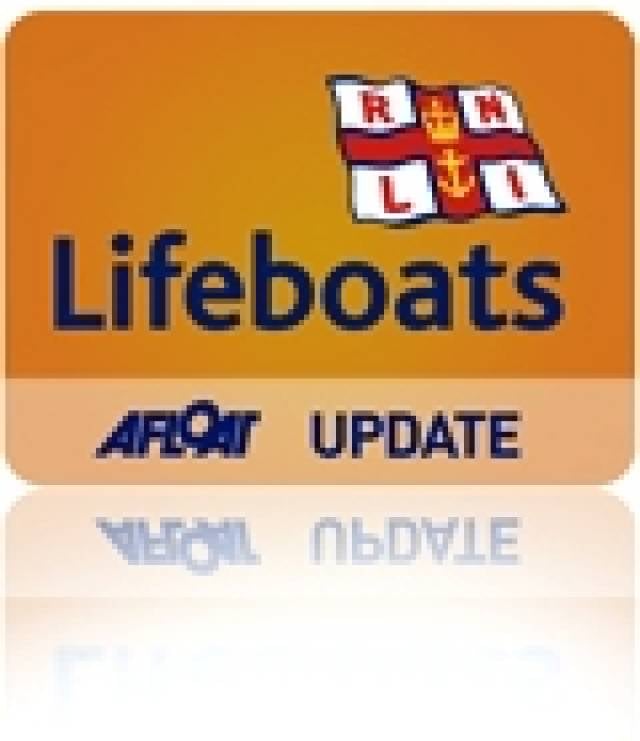#RNLI - The role of Baltimore in the rescue of 23 people from the steamship Alondra, wrecked off the West Cork village in late 1916, is to be featured in a touring RNLI exhibition commemorating the centenary of the First World War.
Hope in the Great War, funded by Arts Council England, will honour the courage and bravery of the lifeboat crew who risked their lives to save others during WWI.
While many will be familiar with the sinking of the Lusitania off the Cork coast in 1915, fewer will be aware of this rescue, which took place in Baltimore a year later.
A decision by the RNLI charity to establish a lifeboat station at Baltimore was made in 1913 but its actual opening took place in 1919, having been delayed by the war.
It was on the 29 December 1916 that the SS Alondra was wrecked on the Kedge Rock, off Baltimore. Sixteen of her crew left in one of the ship’s boats, but drowned before reaching the shore.
The Venerable Archeacon John Richard Hedge Becher - honorary secretary of Baltimore RNLI - and some volunteers launched a boat but it failed to reach the vessel. They returned to Baltimore but put off again as some of the ship’s crew had made the rock. Failing to reach the wreck, they put back to shore again.
At daylight they set out with rocket apparatus. About the same time, two Royal Navy trawlers came upon the scene and the efforts of all, saved 23 survivors some of whom were lowered down a 150-foot cliff.
RNLI Silver Medals for Gallantry were awarded to Archdeacon Becher and Lieutenant Sanderson for their role in helping to rescue the 23 men from Alondra.
Baltimore’s lifesaving story has been chosen to feature alongside five other RNLI lifeboat services that took place in communities across Ireland and the UK.
Opening in February 2014 at the Henry Blogg Museum in Norfolk, Hope in the Great War will start a four-year tour around RNLI museums, lifeboat stations and other museums.
Now the RNLI is asking the local community in Baltimore to get in contact if they know of any details such as family memories, photographs, letters or artefacts connected to the rescue. The most relevant items may be selected to feature within the exhibition allowing the fullest story of the rescue to be told nationally.
RNLI heritage project co-ordinator Becky Fletcher said: “The outstanding efforts by Baltimore’s RNLI volunteers to save lives in WW1 will now be given a voice. “Although little details are known about the SS Alondra rescue, finding any connections would undoubtedly be of further inspiration.”
To pass on any family memories, anecdotes, photos or letters, please email [email protected] or call the RNLI Henry Blogg Museum on 01263 511294.
Locally, meanwhile, Baltimore RNLI is teaming up with members of the Baltimore Amateur Drama Group to create a piece of artwork for the tour. The group is creating a short film about the rescue which will feature within the exhibition.
Olan Marten, spokesperson for the drama group, said: “With so many members of the RNLI supporting our productions over the years, as either cast members, crew or audience it is a great honour to do something for them and also to honour the brave men involved in the Alondra rescue.
“It’s an unusual production as the crew and the director will meet for the first time on the first day of filming. Not only that but the film will travel all over Ireland and the UK for four years introducing these local amateur actors to a huge audience.”
Baltimore RNLI will be the second Cork lifeboat station to mark the role it played during the First World War.
The Courtmacsherry RNLI Lusitania Centenary Committee has already appealed to the public for artefacts, stories and memorabilia to be part of a major exhibition to commemorate the centenary of the sinking of the Lusitania off the Cork coast in 1915.
They are also calling on any family members of those lost or saved in the Lusitania tragedy to contact them to share their stories, which will then be compiled and included in the exhibition.
The commemoration will be held on the May Bank holiday weekend in 2015, with the centrepiece being a Lusitania Exhibition in Courtmacsherry RNLI Lifeboat Station and other local venues.
Courtmacsherry lifeboat responded to the tragedy in 1915 - and to coincide with the exhibition, the lifeboat crew will re-enact the call to service and row out to the site of the disaster.
































































